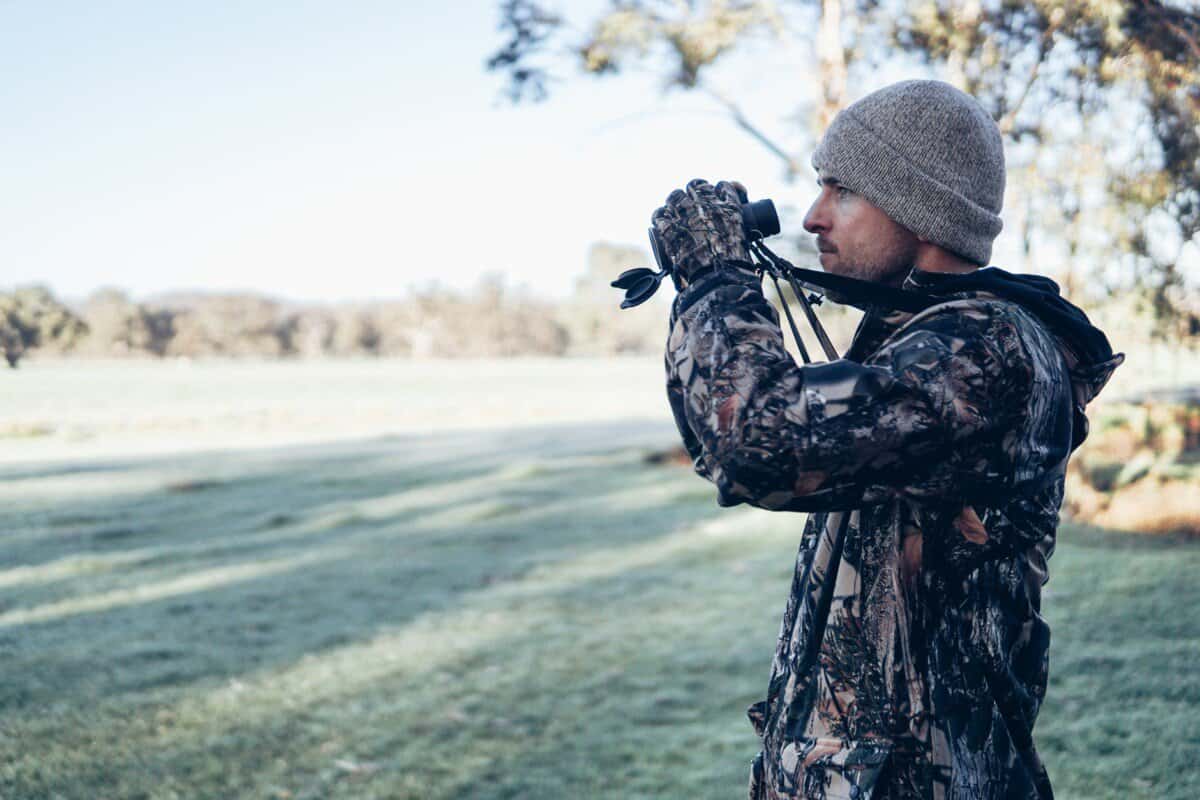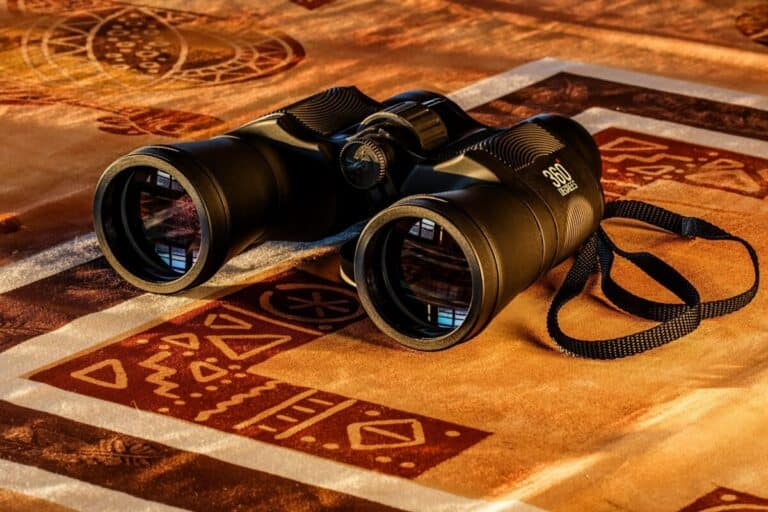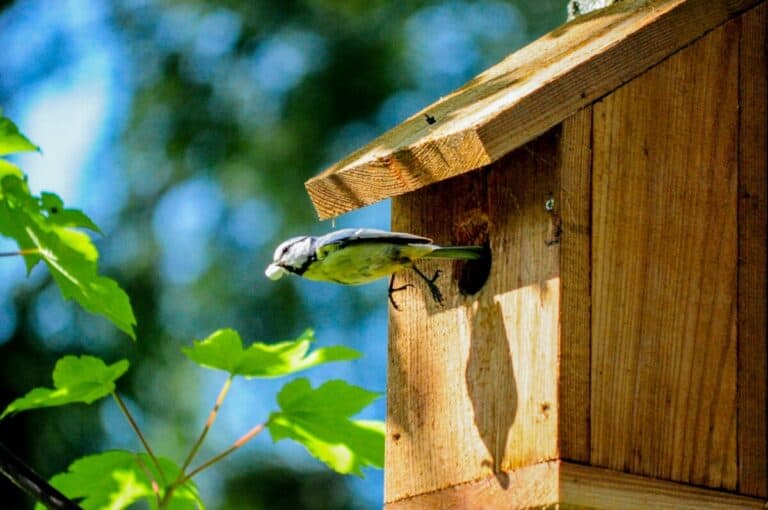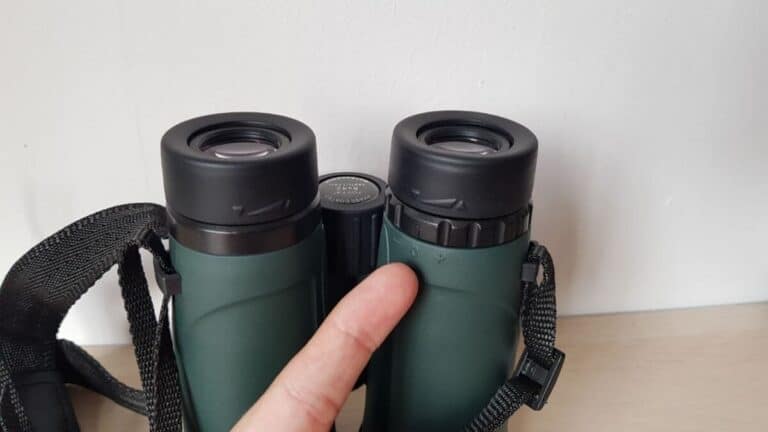Porro Prism vs Roof Prism Binoculars (8 Differences Explained!)
We’re reader-supported; we may earn a commission from links in this article.
I remember I was just having a conversation with another birder the first few times I was out in the jungle.
I noticed that his pair of binoculars was completely different in shape from mine. His had a slightly more compact shape, while mine had a wider lens and a much brighter sight.
I went did some online research on the difference between the two different types of binoculars: Roof Prism Binoculars and Porro Prism Binoculars.
Here’s the simple answer:
Porro prism binoculars have objective lens tubes that are offset from the eyepieces, whereas roof prism binoculars allow light to pass through the objective lenses in two straight tubes, allowing for a more compact design. Roof prism binoculars are more popular among birders because of their compact size.
With birders and bird watchers everywhere opting for different choices in their binoculars for birding, this then begs the question of which binoculars are best for you.
I did some research online on a more detailed comparison and analysis of their differences, so we can all make a more informed decision on which type to purchase for our birding activities.

The Differences Between Porro Prism and Roof Prism Binoculars
Before we all dive into splitting ourselves up into “team porro” or “team roof”, let’s delve deeper into a more technical comparison between the two types.
Let’s see how they compare their technicalities.
Here’s a table I compiled of their differences:
| Porro Prism Design | Roof Prism Design | |
| Origins of Design | The conventional design used by bird watchers since the ’60s | First became popular when introduced by Zeuss and Leitz |
| Prism Design | Prism alignment is offset outward to the side, forming a zig-zag shape barrel | Prism is aligned in a straight line allowing for a straight barrel |
| Cost | Low | High |
| Durability | Not designed to be waterproof and less durable | Waterproof and more durable |
| Ergo Dynamics | Less comfortable zig-zag design, heavier in weight and less portable | Comfortable to hold, lightweight, and more portable |
| Lens Coating | Lenses are not coated, but still allow for reflection | Lenses are coated for better reflection |
| Lens Power | Less powerful | More powerful |
| Intended Use | For casual usage like bird watching or use at a picnic | For professional usages like birding or hunting |
Origins of Design:
The porro prism binoculars have been the conventional design that was used by birders and bird watchers alike since the 1960s. This design is the first instance of the use of prisms in our current-day binoculars. The porro prism binoculars were first conceptualized and made in the 19th century by Italian Ignazio Porro, and are still in use to this day.
On the other hand, the roof prism binoculars are the more modern out of both designs, with many intricate machinations that require advanced optical technologies within their casing.
Prism Design:
The porro prism binoculars have a very distinguishable zigzag shape that can make them very easily identifiable as compared to other binocular types.
The prism design sends light from the objective lens through a pair of prism that is arranged in a manner to produce a zigzag shape. This allows for quick horizontal movement between the prisms, allowing for magnified and corrected images of objects.
Conversely, the roof prism binoculars have a very streamlined and compact shape, with its objective lens being aligned with the lens. This type of prism design utilizes complicated machinations that allow for a straight path from the objective lens to the lens.
Cost:
The cost of a pair of porro prism binoculars is generally lower because it does not require much mechanical and optical precision in its manufacturing.
However, a pair of roof prism binoculars are generally much higher than that of the porro prism binoculars simply because it requires more intricate production and assembly of its parts during its manufacturing process.
Durability:
The durability of porro prism binoculars is much lower than that of roof prism binoculars. The typical pair of porro prism binoculars are not waterproof and not as durable as a pair of roof prism binoculars.
Ergo Dynamics:
Porro prism binoculars have a zigzag shape that may be difficult for some to hold onto for longer periods of time. Birders may find it difficult to hold up a pair of porro prism binoculars for long periods of time does to their bulkier size and heavier weight.
However, the roof prism binoculars feature a more streamlined, straight barrel design that can allow for a more compact size. The roof prism binoculars also typically be lighter in weight as compared to porro prism binoculars.
These attributes contribute to the roof prism binoculars being the more ergo dynamic and comfortable type of binoculars to hold for those who are holding it up at eye-level for long periods of time.
Lens Coating:
The typical porro prism binoculars are not coated with lens coatings to prevent reflection but it is still able to allow for reflection of the most light.
On the other hand, the roof prism binoculars are coated with lens coatings on its lenses for better reflection.
Lens Power:
The porro prism binoculars provide a lower lens power as compared to roof prism binoculars which have a higher lens power. This is because many binocular companies have spent efforts on the roof prism design to perfect it over the years, as people tend to favor the roof prism design over the porro prism design.
Intended Use:
The intended use for porro prism binoculars was for a more casual audience. They are perfect for a picnic to just observe nature and bird watching purposes. As the cost of owning a pair of these binoculars is low, I would recommend these to a person who is just starting out with the basics of birding.
The roof prism binoculars, on the other hand, were designed for more professional use in birding and hunting. As the cost of owning a pair of these is high, I would only recommend it to passionate hobbyists and professionals only.
So now hopefully you will have a more informed decision on whether you will be joining “team porro” or “team roof” for your birding and bird watching activities. Happy birding!
Related Questions

Which Type of Prism Binoculars Is Best For Bird Watching?
Which Type of Prism Binoculars Is Best For Bird Watching? For casual bird watchers who want an inexpensive and entry-level binoculars, I would recommend at porro prism binoculars. However, if you would like to take on a more serious commitment towards birding and bird watching, I would recommend the more serious and professional roof prism binoculars.
Which Type of Prism Binoculars Is Best For Kids?
Which Type of Prism Binoculars Is Best For Kids? For kids, you can consider purchasing a pair of more affordable porro prism binoculars, rather than roof prism binoculars. Leave the more expensive and sophisticated birding equipment (roof prism binoculars) to the adults and teenagers only.
What Magnification of Binoculars Is Best For Birding?
What magnification of binoculars is best for birding? For birding at a far distance, the 10x magnification would be a good fit, but at the expense of a dimmer image and more hand-shake. For birding at a medium to close-range distance, an 8x magnification binoculars will allow for a wider, brighter image with less hand-shake. It is up to you to make a personal choice on which magnification is more suited for your purpose depending on your intended viewing distance.
My Recommended Birding Resources:
Hey there, Justin here!
Here’s a list of all my favorite resources, products, and brands I trust and love.
My Celestron Nature DX 8×42 Binoculars: It’s a great budget pair for beginner birders. Highly valued for its price! Read my review.
Safe Paint for Bird Baths Guide: Learn about non-toxic paint for painting bird baths.
Safe Sealers for Bird Baths Guide: Learn which sealers are safe for bird baths.
Safe Paint for Bird Feeders Guide: Learn what special care needs to be taken to paint bird feeders with the right paint.
Safe Paint for Birdhouses Guide: Learn about non-toxic paint for painting birdhouses. (Not the same as bird baths!)
Bird Identification Apps Guide: 2 of my favorite birding apps are Merlin Bird ID, and eBird Mobile! Merlin is great for tracking and identifying birds, and eBird Mobile is great for tracking the birds sighted when birding.
Check out my resources page for the full list of resources I recommend!

Justin Chia
Justin is the founder and author of Birding Outdoors. He is a Nanyang Technological University (NTU) alumnus with a Bachelor of Biological Sciences and a former data analyst.
Now, Justin runs the Birding Outdoors blog full-time, hoping to share his deep love for birds, birding, and nature with others.
To unwind, Justin enjoys gaming and reading.







